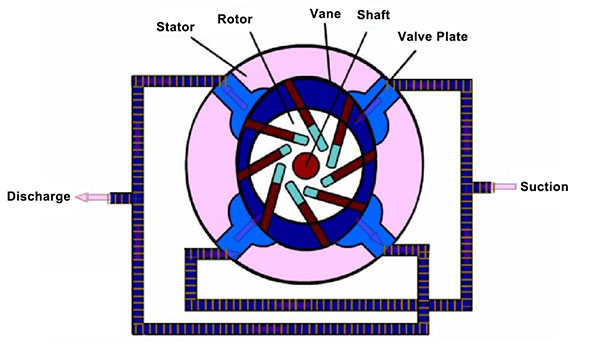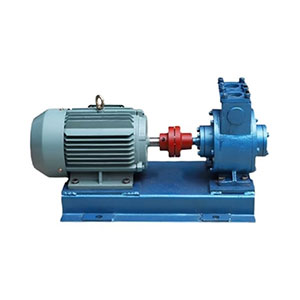What is a Sliding Vane Pump?
A sliding vane pump is a common type of hydraulic pump used to convert mechanical energy into the flow of liquid. Its working principle is based on one or more vanes (also known as blades, wings, or vanes) sliding within the rotor of the pump as it rotates, thereby generating the pumping effect for liquids. In this article, ATO industrial automation will briefly introduce it to you, including its basic structure, working principle, characteristics, applications and precautions etc., to help you have a better understanding of it.
Basic Structure of Sliding Vane Pump
A sliding vane pump consists of components such as the pump body, vanes, bearings, seals, and a transmission device. The pump body is the main part of the sliding vane pump, containing the vanes and bearings. Seals are used to ensure the pump body's tightness, and the transmission device is responsible for power transmission.
Working Principle of Sliding Vane Pump
The rotor of a sliding vane pump is a cylindrical body with radial grooves where vanes are placed, allowing them to freely slide within the grooves. The eccentrically placed rotor rotates within the pump body. As the rotor is driven to rotate, the vanes are pressed against the inner wall of the pump body either by centrifugal force or spring force. During the first half of the rotation, the space enclosed by adjacent vanes gradually increases, creating a partial vacuum and allowing the intake of liquid. In the second half of the rotation, this space gradually decreases, squeezing the liquid and pressurizing it into the discharge pipe. Typically, such pumps operate at pressures below 7 MPa.
Sliding vane pumps have a compact structure, small footprint, uniform flow, smooth operation, low pulsation, and minimal noise. They exhibit higher efficiency compared to typical gear pumps. However, their complex structure and susceptibility to wear and tear are considerations. These pumps find applications in hydraulic systems and lubrication systems of machine tools, hydraulic presses, lifting and transport machinery, construction machinery, and plastic injection molding machines.
Characteristics of Sliding Vane Pump
- Two structures: vertical and horizontal, occupying a small footprint and easy to install.
- Direct motor drive, featuring long lifespan, high efficiency, low vibration, and low noise. Eliminates static electricity hazards associated with belt drives, ensuring safer and more reliable operation.
- Utilizes new structures and materials, ensuring vane wear resistance and flexible movement, thereby enhancing pump performance and service life.
- Optimally designed fixed-rotor structure that allows the pump to operate in both forward and reverse directions. Changing the direction of the motor vane and safety valve can facilitate both loading and unloading functions.
Applications of Sliding Vane Pump
Used for the transfer of materials such as fuel for oil tankers and ships, lubricating oil, aviation fuel, petrochemicals, gasoline, diesel, biodiesel, solvents, etc. Widely applied in mobile or fixed installations, the pump can be installed on any oil tanker and connected to an electric motor or diesel engine, mounted on a metal floor, and used in high-flow refueling machines or mobile refueling equipment.
Precautions for Sliding Vane Pump
- Operators should be familiar with the structure and working principles of vane pumps and strictly follow the instructions.

- Before starting the vane pump, check for any debris in the pump body and pipes to avoid affecting normal operation.
- During use, clean the vanes and bearings promptly to ensure their normal operation.
- Regularly inspect the seals of the vane pump, and if wear or aging is detected, replace them promptly.
- In the event of abnormal noise or vibration during the operation of the vane pump, immediately shut it down for inspection to prevent more significant malfunctions.
- After a period of use, replace the lubricating oil in the vane pump to ensure the normal lubrication of vanes and bearings.
In summary, sliding vane pumps are reliable and widely used hydraulic pump types suitable for medium and small-scale hydraulic systems. Additionally, due to friction between vanes and the pump wall, regular inspection and maintenance are necessary. When selecting a sliding vane pump, consideration should be given to specific application requirements, working conditions, and performance criteria.

